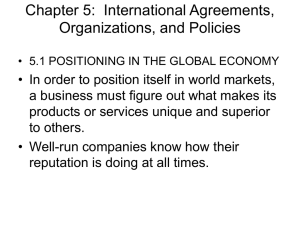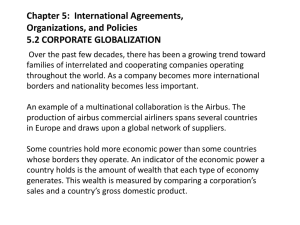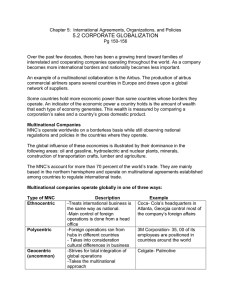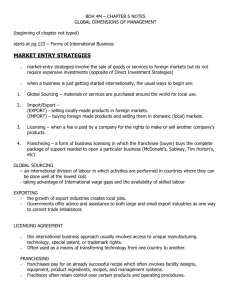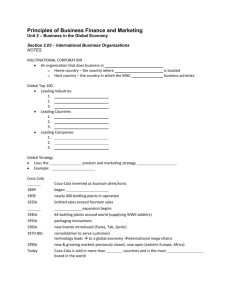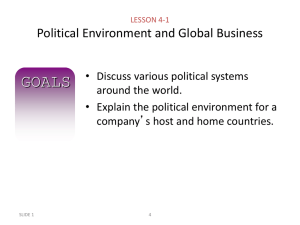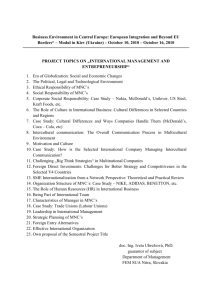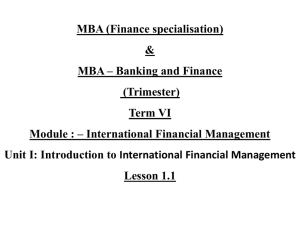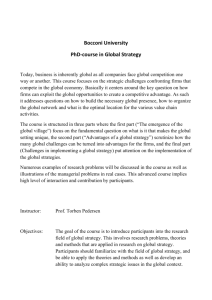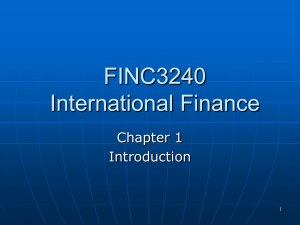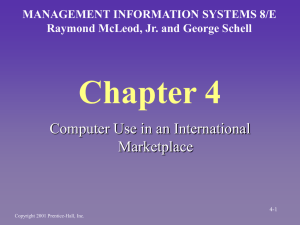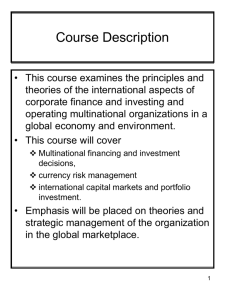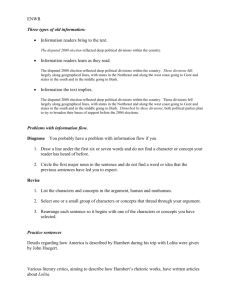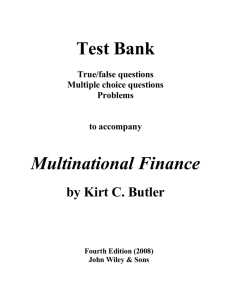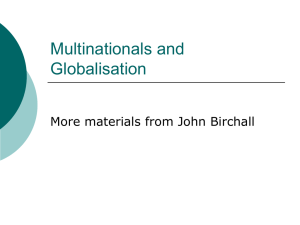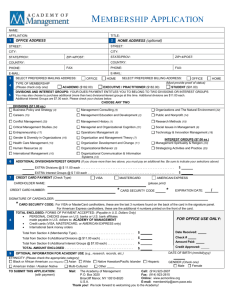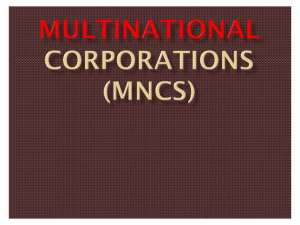bbb4m Chapter 5 - MissIfe-BBB4M-SOC
advertisement
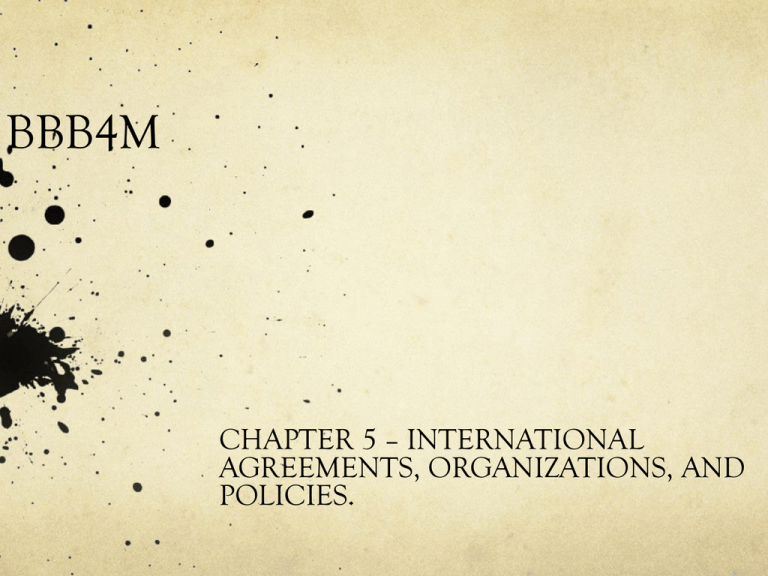
BBB4M CHAPTER 5 – INTERNATIONAL AGREEMENTS, ORGANIZATIONS, AND POLICIES. 5.1 Positioning in the Global Economy Positioning starts with a product, a piece of merchandise, a service, a company, an institution, or even a person. To position itself in world markets, a business must establish what makes its products or services unique and superior to others. (image and reputation) Visibility among trade partners Strategies toward Global Positioning By exporting or importing Franchising a business operation Starting up a wholly owned subsidiary Purchasing parts/materials in foreign markets Establishing a joint venture Strategic alliance International and Global Companies Global economy is based on the interdependence of competitors, markets, and resources. A global company is one in which top management makes decisions to maximize worldwide revenues, income, and profits BENEFITS AND CHALLENGES IN GLOBAL COMPANIES – PAGE 148-149 5.2 Corporate Globalization Globalization refers to the growth and spread of interactive international economies and businesses around the world. A Multinational company (MNC) is a business enterprise that conducts business in several countries. The global influence of these economies is illustrated by their dominance in the following areas: oil and gasoline, hydroelectric and nuclear plants, minerals, construction of transportation crafts, lumber and agriculture. Multinational companies Ethnocentric MNC e.g. Coca-Cola's headquarters in Atlanta, Georgia control most of the company’s foreign affairs. Polycentric MNC e.g. 3M corporation – 35,00 of its employees are positioned in countries around the world Geocentric MNC (uncommon) e.g. Colgate-Palmolive Challenges to Multinational Organizations Developing global customers beyond the Triad. Multinational companies sometimes dominate economies and try to influence governments. Creating new international divisions of labour Global Organizational Structure Separate International Divisions Functional Divisions Product Divisions Geographic Divisions Matrix Organization 5.3 International Trade Agreements There is an increase need for trade agreements Trading Blocs Reciprocity Bilateral trade/multilateral trade NAFTA, FTAA, EU, APEC Agreement on Internal Trade (AIT) Free Trade or Duty-Free Zones 5.4 Organizations Influencing Global Trade G20 – An international forum of finance ministers and central bank governors. World Trade Organization(WTO) World Economic Forum (WEF) Organization for Economic Cooperation and Dev. World Bank Group International Chamber of Commerce (ICC) International Monetary Fund (IMF) National Organizations
